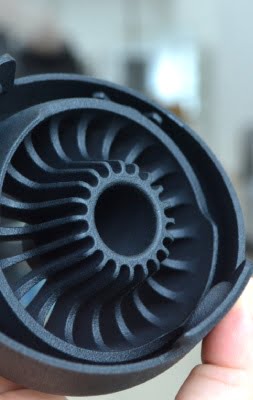Clear, strong, acrylic & COC Manifolds & Microfluidics without contamination
At IPFL, diffusion bonding is more than a joining method—it is the cornerstone of our microfluidic manufacturing. Our acrylic bonding process fuses layers of pre-machined plastic components at a molecular level. By applying tightly controlled heat and pressure inside a particle-free environment, we fuse Acrylic (PMMA), Cyclic-Olefin Copolymer (COC), Ultem (PEI) and Polysulfone at the molecular level to form transparent, adhesive-free, leak-tight seals. IPFL specialises in diffusion bonding acrylic, COC, Ultem and Polysulfone, a process that achieves clear, strong joints without the need for adhesives. This technique is crucial in producing components for medical and scientific research, where purity and precision are paramount. A seamless and permanent bond is ideal for applications such as fluidic plates, medical and pneumatic manifolds, high-class pen blanks, medical diagnostic imaging, and light guides. This solvent-free process preserves biocompatibility, eliminates extractables, and delivers optical clarity essential for lab-on-a-chip, organ-on-a-chip and point-of-care diagnostic cartridges where even trace contamination can skew assay accuracy.





IPFL’s diffusion bonding is tailored for a range of applications, ensuring the highest quality and reliability:
Our continued research and development in diffusion bonding and laser welding position us at the forefront of this advanced technology. From creating high-precision components with complex internal shapes to ensuring the utmost purity and quality in bonding, IPFL sets the standard in acrylic diffusion bonding.
Whether your project requires detailed medical manifolds or sophisticated analytical devices, our diffusion bonding services offer the precision, purity and efficiency essential for your critical applications.

Plastic diffusion bonding is the pivotal step that turns a stack of precision-machined or PµSL-3D-printed polymer layers into a seamless microfluidics chip or microfluidics device ready for real-world testing. By fusing acrylic, COC, Ultem and polysulfone at the molecular level—without solvents or adhesives—IPFL delivers transparent, leak-tight lab-on-a-chip and organ-on-a-chip platforms that preserve sub-150 µm channels for laminar flow, rapid fluid exchange and bubble-free imaging. Whether your project is an early-stage prototype destined for VC demos, a fast-iterating rapid fluidics sprint, or a production-ready cartridge for drug-delivery assays, our diffusion-bonded manifolds maintain biocompatibility, sterilisability and chemical resistance — critical for microfluidics for biotechnology, microfluidics for cell culture and DNA/RNA amplification workflows.
From our facility in Ware, Hertfordshire—ideally placed to serve the microfluidics Cambridge research hub and the wider microfluidics UK community—IPFL combines micron-accurate CNC milling with high-resolution microfluidics 3D printing to fabricate complex channel networks, mixers, valves and sensor cavities. Every layer is plasma-activated and hot-pressed under computer control to eliminate dead volume, ensuring repeatable flow rates for microfluidics for biological applications and microfluidics for cellular applications alike. In-house testing guarantees that each bonded manifold exceeds the pressure, clarity and sterility demands of modern diagnostics, chromatography and high-throughput screening.
If you are searching for a microfluidics company that understands how to make microfluidics reliable from concept to clinical trial, talk to IPFL. Our end-to-end microfluidics fabrication service—design advice, materials selection, prototyping, scale-up—has supported breakthrough microfluidics for drug delivery, point-of-care PCR systems and next-gen sequencing prep. Partner with IPFL to turn your ideas into diffusion-bonded, production-ready microfluidic manifolds that meet the pace of advanced biotech innovation.








